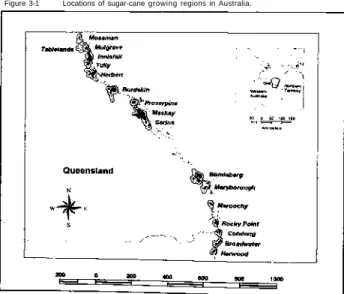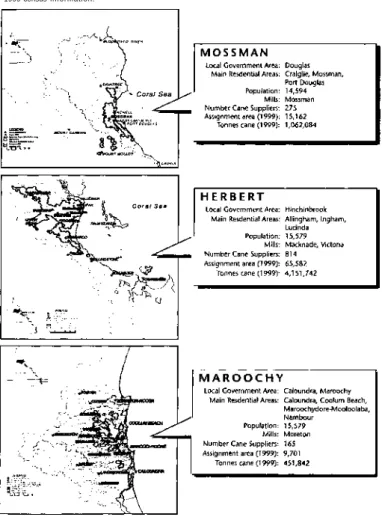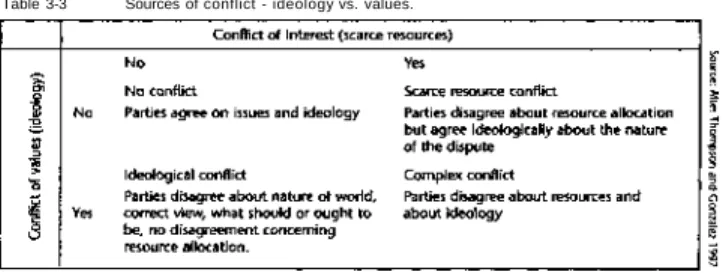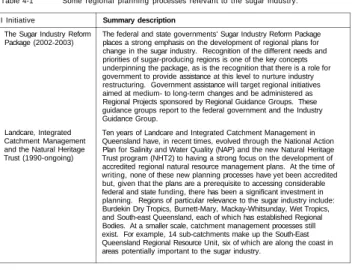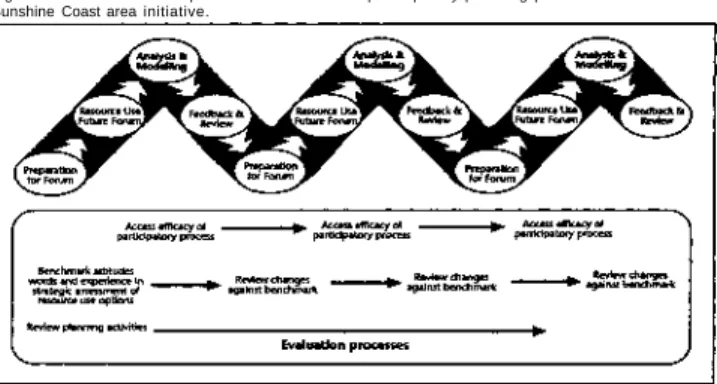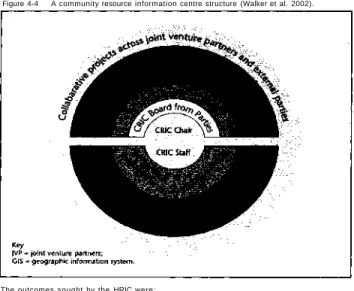The bailout package for the sugar industry is a classic example of the failure of a centralized approach to reform. Thilak Mallawaarchchi's widely published work on resource economics provided an overview of the historical and economic landscapes of the sugar industry.
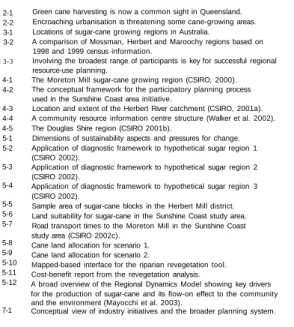
How to get the most out of this resource book
This document is intended for people interested in or involved in regional planning in the sugar industry. However, there are also policy professionals and regional stakeholders who are becoming more interested in regional planning in the sugar industry.
The sugar industry in Australia
This resource book outlines some of the options for industry to respond to these challenges. Uncertainty about the future of the industry - Increasing uncertainty about the future of supply chain partners and the arrangements that maintain relationships between sectors.
An historic perspective of an evolving industry
6) and Mackay Sugar Co-operative Association (4), while most of the rest are owned by grower co-operatives. 5% of the annual sugar cane crop, and most of the cane is grown on family farms.
Current drivers of change
From an economic and technical perspective, the sustainability of the sugar industry relates to the feasibility and viability of sugar cane production. The biophysical dimension of sugar industry sustainability includes the natural system within which the sugar industry operates.
Planning to influence change
In this chapter we explore the concept of regions and regional variation with the sugar industry. The idea that different regions make up the sugar industry is fundamental to the principles, tools and processes identified in this resource book.
The sugar industry as a set of regions
What do we mean when we think of the Australian sugar industry as a group of regions? The size of the industry in terms of number of growers, production area, tons produced and number of mills has major implications for the sustainability of the industry in different regions.
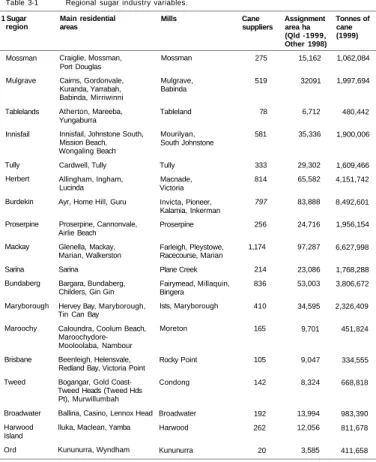
The purpose of planning
What are the features of regional planning?
Operational planning and decision-making involve routine, although not necessarily simple, decisions that can be repetitive and formulaic; decisions about pesticide selection and application strategy for example. Strategic decision-making is about long-term goals and planning and strategies that may require group decision-making through negotiation.
One of the most important determinants of planning effectiveness is the extent to which plans are able to handle uncertainty. A large part of the change pressure identified earlier (in section 2.3) relates to uncertainty issues.
Efficiency - The balance between planning costs and the value of the results of the planning process determines the efficiency of the process. This aspect of the process naturally extends to the accountability of planning outcomes mentioned in the previous section.
Trust and planning processes
Accountability - Ideally, a planning process is initiated by people or organizations who intend to improve future outcomes. Integration - The planning process allows for the recognition and assimilation of a complex mix of interests and goals (often in conflict with each other) and knowledge and information (which are inevitably incomplete) in the pursuit of its goals.
Requirements for planning
In the specific context of the sugar industry, the human dimension of the decision-making environment includes public and private stakeholders, such as millers, growers, refiners, government agencies and special interest groups. The institutional aspect of the sugar industry's decision-making environment includes government plans, industry and government policies, environmental codes, legislation and bureaucracies at all levels of government.
We suggested that regional planning processes are important in managing industry change and discussed the characteristics of regional planning processes and outcomes. We review a range of recent, current and proposed regional planning processes within the sector and briefly discuss the different features of key examples.
Regional planning initiatives in the sugar industry
Long-established planning and management processes potentially have an increasing role to play in regional planning and management. For example, River Improvement Trust functions (eg Burdekin Shire, Cairns, Douglas Shire, Herbert River, Johnstone Shire etc.) are long established and increasingly involved in regional planning processes.
Case studies
Various statutory and non-statutory committees such as the Burdekin-Bown Advisory Committee on Integrated Floodplain Management;. For example, they were all motivated by a regional perspective on the sugar industry and its management (keeping in mind that many implementations will only happen at the farm level).
The Moreton Mill region on the Sunshine Coast
The Sunshine Coast initiative focused on developing a stakeholder-led resource planning approach to drive the viability of the Moreton Mill. The framework was based on the view that resource use planning must be highly participatory and responsive to the ever-changing working environments of industry and communities.
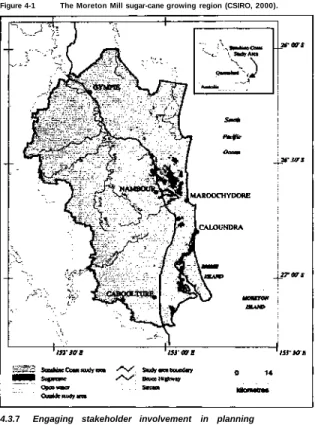
The HRIC, a case study in regional spatial data management
Four of the stakeholders (CSR Sugar Mills, Herbert Cane Protection and Productivity Board, Hinchinbrook Shire Council and CANEGROWERS Herbert Executive) represented the local industry and community, while the other two (Queensland Department of Natural Resources and Mines and CSIRO) represented state and represented the federal government. Governments respectively. Employees of the joint venture partners are responsible for a large part of the application of GIS to their core activities.
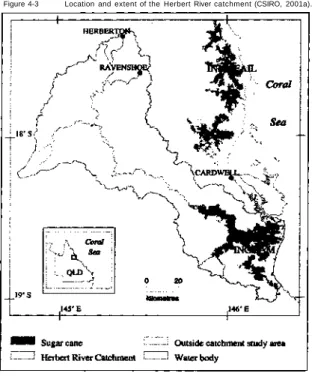
The Douglas Shire Joint Venture Partnership
Douglas Shire Council (DSC) – is responsible for the planning and management of the built environment and associated community infrastructure under the Local Government Act 1993. Producer welfare includes recognizing the need for the conservation of productive land and the stabilization of the ecosystem on which the sugar industry depends. It has sought to develop an inclusive partnership that builds on the role of local government in representing the interests of the wider community.
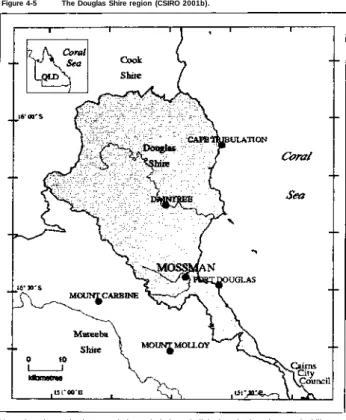
Summary of case study experiences
Non spatial data
The number of persons in the labor force expressed as a percentage of the total number of persons aged 15 and over. The number of all separated and divorced persons expressed as a percentage of all persons over 15 years of age. The proportion of rental housing in the Mossman region (38%) was significantly higher than in the Herbert or Maroochy regions (2 5 % each) (Australian Bureau of Statistics 2000).
Spatial data
Full ownership was most common in the Herbert or Maroochy regions (5 2% and 4 3% respectively), rented accommodation was most common in the Mossman region. This detailed series of data sets supported a detailed investigation of land use change in the Herbert area. Two sugar mills in Herbert County were using outdated (two years old) and inaccurate (up to 80 meter error) terrestrial mapping methods to map agricultural sugarcane blocks.
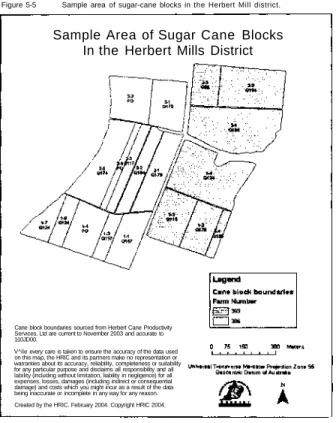
Managing spatial data
The elevation data comprised one of the primary datasets because it was used to derive slope classes. Variations of the mapping of land suitable for sugar cane were subsequently completed in response to sugar industry inquiries. Economic limits can be indirectly determined from the physical limitations of the available road network.
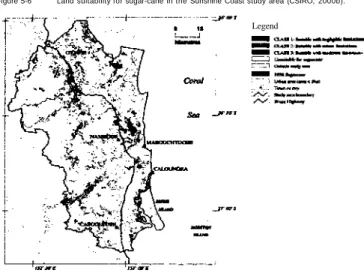
Evaluation of planning strategies
Review of the impact of the Sugar Industry Code of Practice on perceptions and practices in farm management. Development of an economic model for the sugar industry (in five aggregated regions) and assessment of the effect of a number of scenarios based on the model. Walker (2003) Economic and environmental modelling, a case study: A systems approach to the analysis of the sugar industry in the Herbert catchment, Northern Australia.
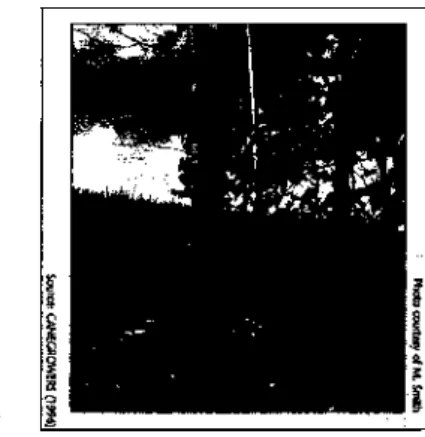
In Chapter 3 we discussed the role of information and decision-making tools in helping to structure and inform planning processes. Analytical decision support methods can be important in helping stakeholders understand, respond, and deal with complex and unknown challenges in planning and decision-making. Similarly, records of decision-making processes can be used to justify decisions and demonstrate a fair process.
Overcoming obstacles to using analytical tools
Evidence-based approaches and the risk of bias
A frustration for participants in planning processes is that the analyzes used miss the point - that they address in great detail an issue that "those in charge" think is important, but are not addressing issues that groups or individuals w i t h interests in risk they think are really important. Therefore, planning outcomes can be undermined by how the biases of those who drive the process and select issues and tools for analysis disenfranchise other participants. Ingrained bias in society reflects a consistency towards a particular approach to analysis, either at the level of logic or paradigm applied to the analysis, or in the particular method or even software implementation used.
How can analytical approaches to planning be designed to maximise their contribution?
The participatory approach to design and development aims to ensure the application of the analyzes and tools in the planning process. Regional planning by the sugar industry is only part of the broader picture of resource management. Second, some of the external pressures facing the sugar industry are actually the result of ineffective and inappropriate institutional arrangements operating at other scales.
What are institutional arrangements and why are they important for industry planning?
First, it means that regional planning in the industry will affect institutional arrangements that operate at other levels and for other purposes (eg, plans that define public expectations for the use and management of coastal and water resources). Although regional planning by industry is unlikely to be able to solve institutional problems at the state and national levels, the process of implementing regional planning will assist industry in identifying external institutional challenges for change. Institutional arrangements are important to industrial planning because they enable and constrain industry from achieving desired outcomes.
The institutional context for sugar industry planning
In the context of the sugar industry, the institutional system includes stakeholders (such as millers, growers, refiners, advisors, policy makers, and the community) and various other institutional arrangements that govern resource allocation, farm management, environmental management, organizational roles, responsibilities, and stakeholder relationships (Table 7-1). . The number of regional initiatives and events affecting the sugar industry is increasing in Queensland. In addition, local boards have responsibility for land use planning for the sugar industry as defined in the Sugar Industry Act 1991 (Queensland Government 1991).
Institutional challenges for the sugar industry
Laredo (1999) An analysis of the views of the members of the Herbert River Catchment Coordinating Committee November 1998. Review of the legislative capacity of local authorities to conserve natural vegetation: Draft final report. Shrubsole (1996) What you told us: A survey of the views of Queensland ICM Chairs and Coordinators and Herbert River Catchment Coordinating Committee members.
Databases for planning - examples from case study regions
Elphinstone sub-catchment boundaries defined by Cameron McNamara's survey of the Lower Herbert River catchment. Palm Creek sub-catchment boundaries defined by Cameron McNamara's study of the Lower Herbert River catchment. Trebbone Stream sub-catchment boundaries defined by Cameron McNamara's Lower Herbert River catchment study.
Key arrangements impacting sugar-cane production in Queensland
Coastal management planning is very important to the sugar industry, as most of Queensland's industry is located within the narrow coastal zone defined in this Act. Compliance with the Fish Habitat Code of Practice (FHC003) meets the requirements of the Fisheries Act 1994. Environmental Protection Policies under the Act provide further detailed guidance on the management of specific aspects of the environment (eg air, noise, water and waste). pollution).
